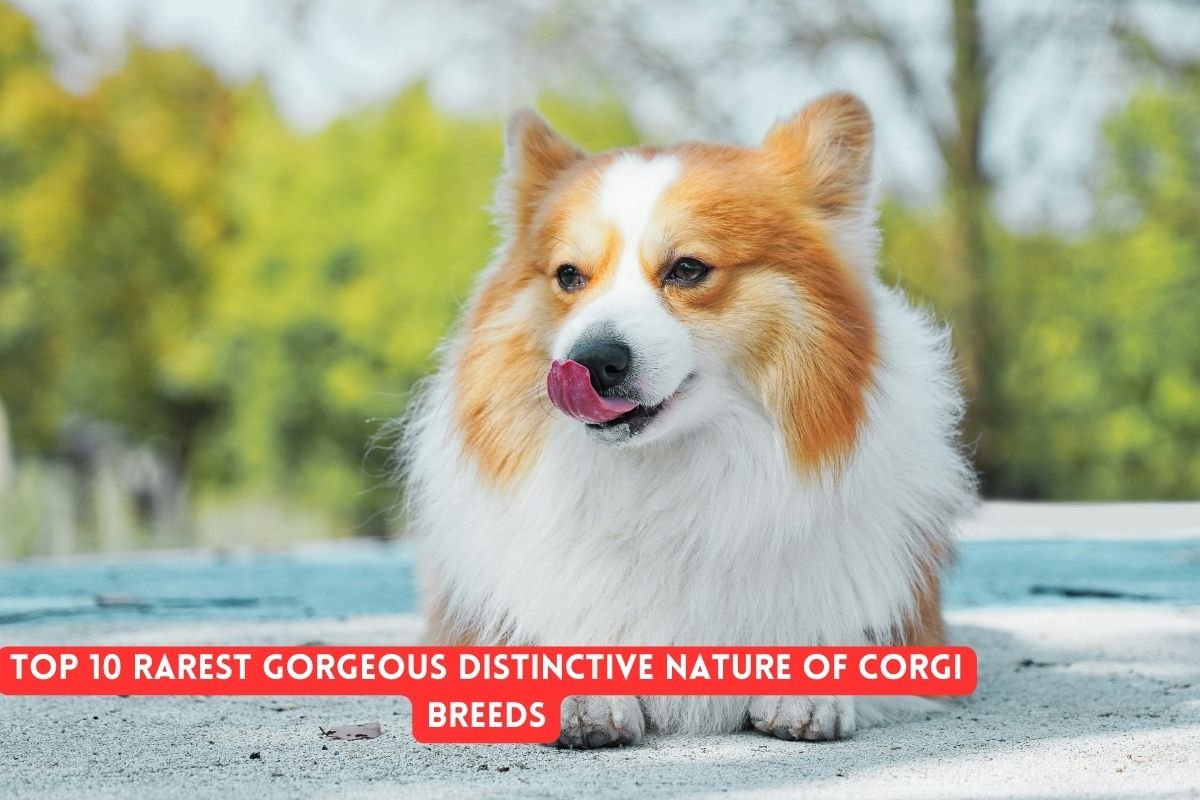Corgis, known for their short legs, fluffy coats, and endearing personalities, are beloved around the world. While most people are familiar with the Pembroke Welsh Corgi and the Cardigan Welsh Corgi, there are many distinctive and rare traits within these breeds that make certain corgis stand out. Here, we explore the top 10 rarest and most gorgeous distinctive characteristics found in corgi breeds.
Fluffy Corgis
A genetic variation in corgis can lead to a longer, fluffier coat, giving these dogs a distinctly plush and luxurious appearance. Known as “fluffies,” these corgis have coats that are more voluminous and require extra grooming, but their unique look is undeniably charming.
Blue Merle Coat
Blue merle corgis have a striking coat pattern that includes patches of black, gray, and white. This coloring is more commonly found in Cardigan Welsh Corgis. The unique marbled appearance is not only rare but also highly sought after by enthusiasts.
Brindle Pattern
Another rare coat pattern is the brindle, where dark stripes or streaks appear over a lighter background. This is also more typical in Cardigan Welsh Corgis and adds a wild, tiger-like flair to their appearance.
Red-Headed Tri-Color
Corgis with a red-headed tri-color pattern have a beautiful combination of red, black, and white fur. This distinctive coloring is especially eye-catching and is considered rare, making these corgis even more special.
Floppy Ears
Most corgis have erect ears, but occasionally, some are born with ears that remain floppy. While not adhering to breed standards, floppy-eared corgis are adored for their unique and endearing look.
Sable Coat
Corgis with a sable coat have fur that is a mix of black-tipped hairs over a base color, creating a shaded effect. This rare coat color can vary greatly, making each sable corgi’s appearance unique.
Tail Variations
While Pembroke Welsh Corgis are known for their docked tails, some are born with natural bobtails or even full tails. Cardigan Welsh Corgis, on the other hand, always have full, bushy tails. The tail variation adds an element of surprise and distinctiveness to these breeds.
Speckled Eyes
Occasionally, corgis can have eyes that feature a speckled or marbled appearance, particularly in merle-patterned dogs. This unique eye coloring adds an extra layer of depth to their already expressive faces.
Dwarfism Variation
Corgis are naturally a dwarf breed, but some have more pronounced dwarfism characteristics than others. This can result in shorter legs and a more compact body, enhancing their signature low-to-the-ground stance.
Unique Personalities
Beyond physical traits, the personality of a corgi can also be distinctive. Some corgis display a rare combination of traits such as extreme loyalty, heightened intelligence, and a particularly playful nature, setting them apart from their peers.
Conclusion
The corgi breed, with its rich history and charming appearance, continues to captivate dog lovers worldwide. The rare and distinctive traits within the breed add to their allure, making each corgi unique in its own right. Whether it’s a fluffy coat, a striking blue merle pattern, or a playful personality, these rare characteristics make corgis even more special and cherished by their owners.
FAQs
What is a “fluffy” corgi?
A “fluffy” corgi has a longer, more voluminous coat due to a genetic variation, requiring more grooming but giving them a plush appearance.
Are blue merle corgis common?
No, blue merle corgis are relatively rare and are particularly striking with their marbled coat pattern.
Can Pembroke Welsh Corgis have tails?
Yes, some Pembroke Welsh Corgis are born with natural bobtails or full tails, although traditionally, their tails are docked.
What causes corgis to have speckled eyes?
Speckled or marbled eyes are usually found in corgis with merle coat patterns and are a result of genetic variations.
Do corgis with floppy ears have any health issues?
Floppy ears in corgis do not typically indicate any health issues; they are simply a genetic variation that affects ear cartilage.
